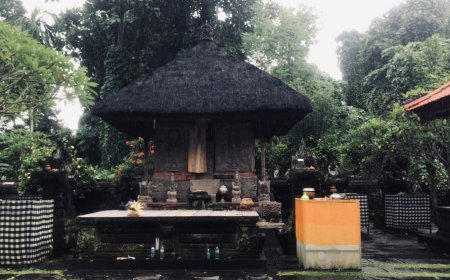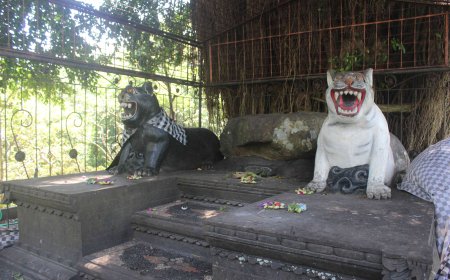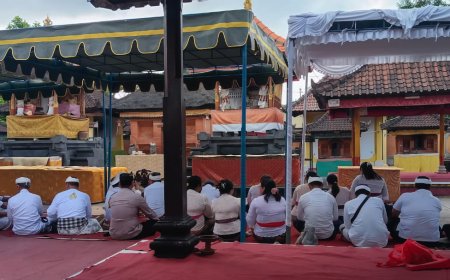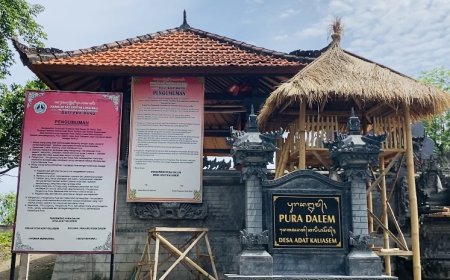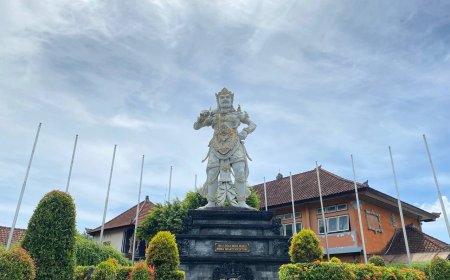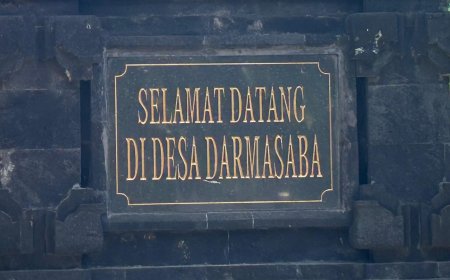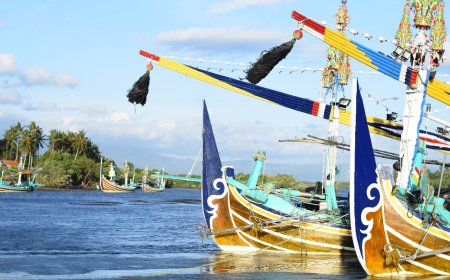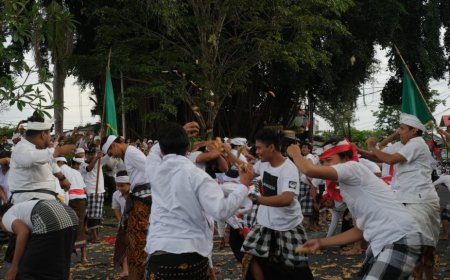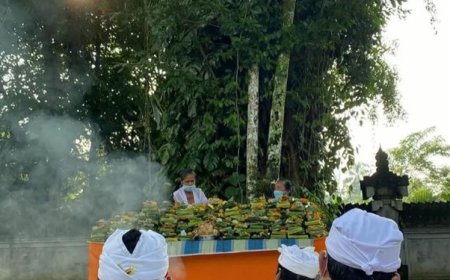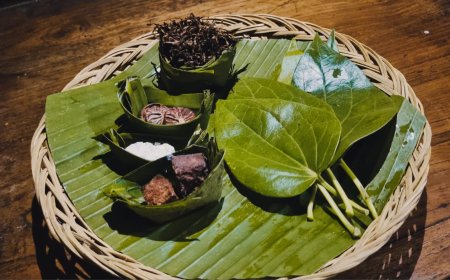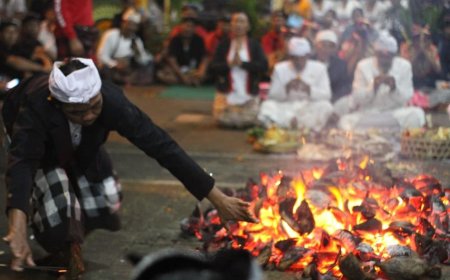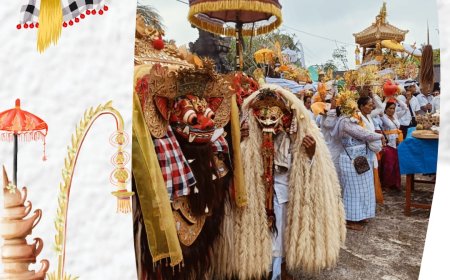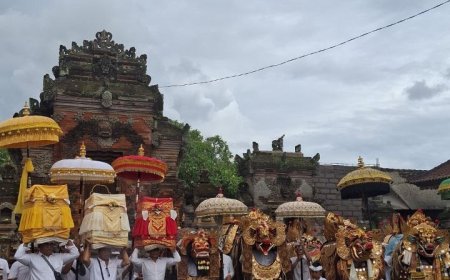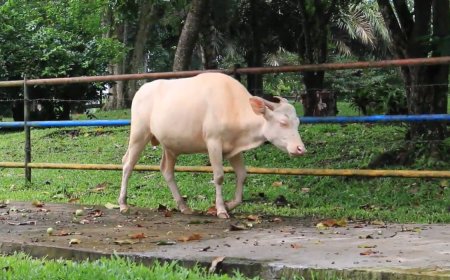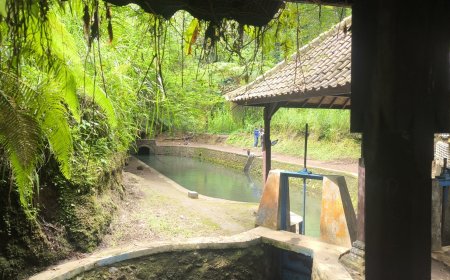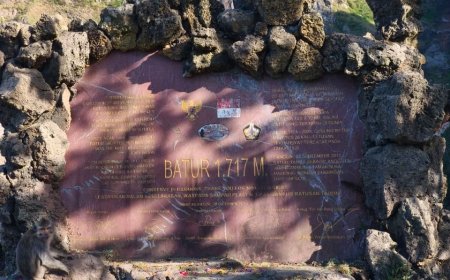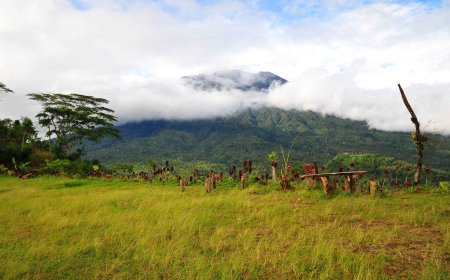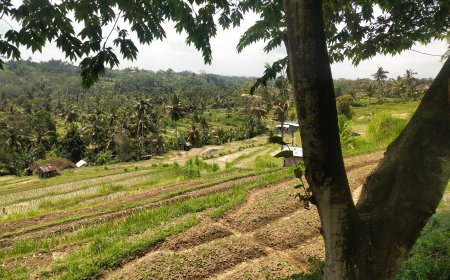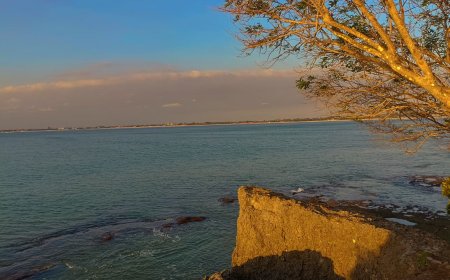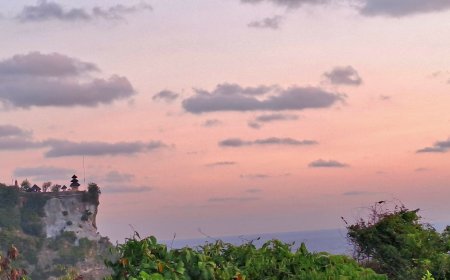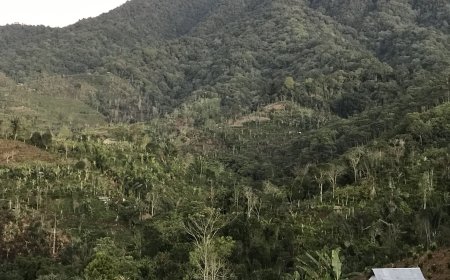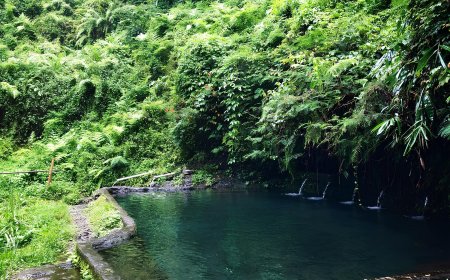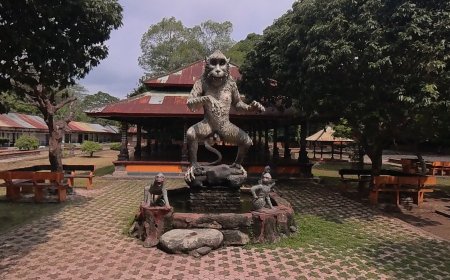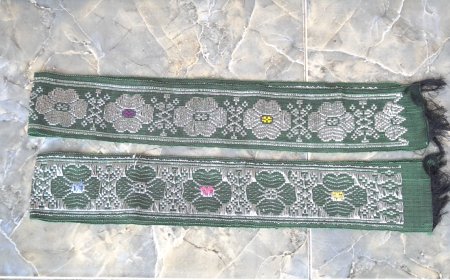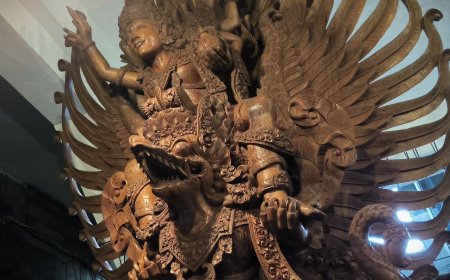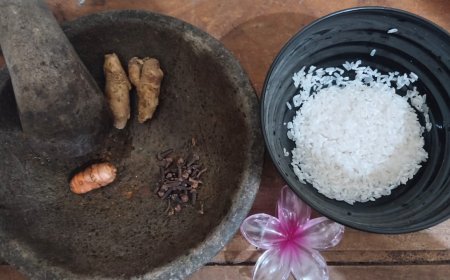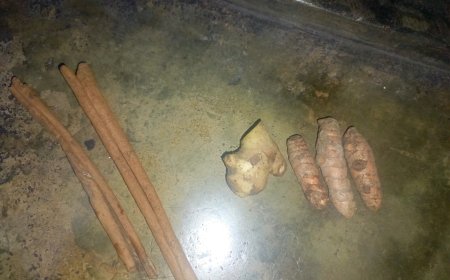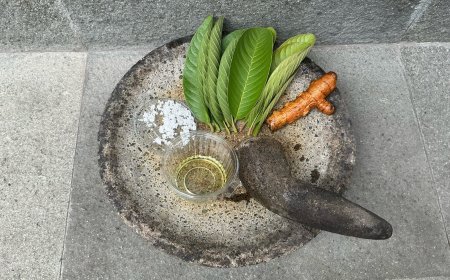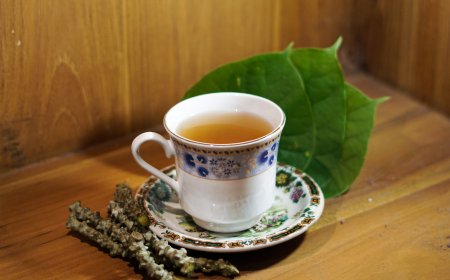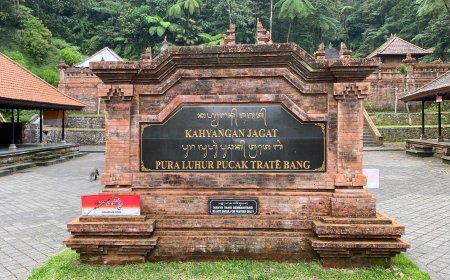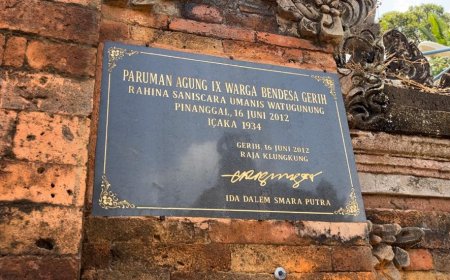Pura Baturening: The Sacred Legacy of Kawitan Bendesa Aban and the Noble Heritage of Bali
Pura Pura Baturening in Abiansemal, Badung, is a historic temple that preserves the sacred legacy of Kawitan Bendesa Aban. It stands as a symbol of ancestral journey and devotion passed down through generations. Its three main mandalas reflect deep spiritual and cultural significance. Every Purnama Kapat, the community gathers to offer devotion and honor ancestral traditions. Today, Pura Baturening remains a sacred heritage and spiritual identity of Bali.

Pura Baturening is located in Banjar Baturening, Desa Adat Baturening, Abiansemal District, Badung Regency. The temple holds deep meaning as it embodies the sacred journey of the ancestors, especially Kawitan Bendesa Aban, who continues to be revered as the spiritual root of the community.
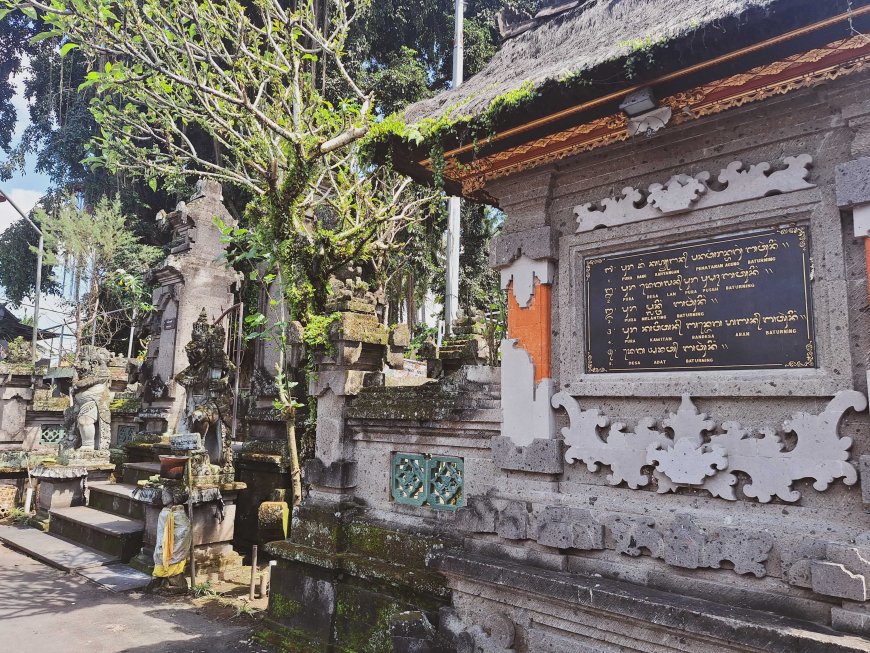 Main Entrance of Baturening Temple (Photo Source: Personal Collection)
Main Entrance of Baturening Temple (Photo Source: Personal Collection)
The origin of this temple is told through an ancient inscription studied by the Denpasar Archaeological Center in 2013. The inscription narrates a long ancestral lineage beginning with Ida Sang Prabu Sri Ratna Dewa of Sang Kola Negara and his daughter, Dewi Sangka. Her marriage to Bhatara Manganjali bore Sang Kora, a wise and skilled figure devoted to the study of religion and weaponry. Guided by Bhatara Mahari, Sang Kora received divine instruction and was granted the sacred title Pancalia as a symbol of purity and knowledge.
From this lineage emerged I Bendesa Aban, who married Dewi Sageni and had a daughter, Dewi Rajasa, the consort of Ida Bathara Siwa Padma Tigang. Their descendants continued through Ida I Batu Angsut, believed to be a divine gift from Ida Bathara Pasupati. During his sacred journey to Bali, he discovered Batu Lumbang on Mount Abang, which became a holy site in the history of ancestral worship.
The story continues as Ida I Batu Angsut moved to the Mount Batur area, later honored as Jro Gede Batu Angsut. His sacred pilgrimage received blessings from Dewi Danu, who decreed that a temple should be established to maintain natural balance and harmony. Supported by the guidance of Ida Sang Prabhu Dimangupura and the warrior I Gusti Agung Ngurah Made Agung Bhima Sakti, a sanctuary was built in Tegal Suci, now known as Pura Baturening.
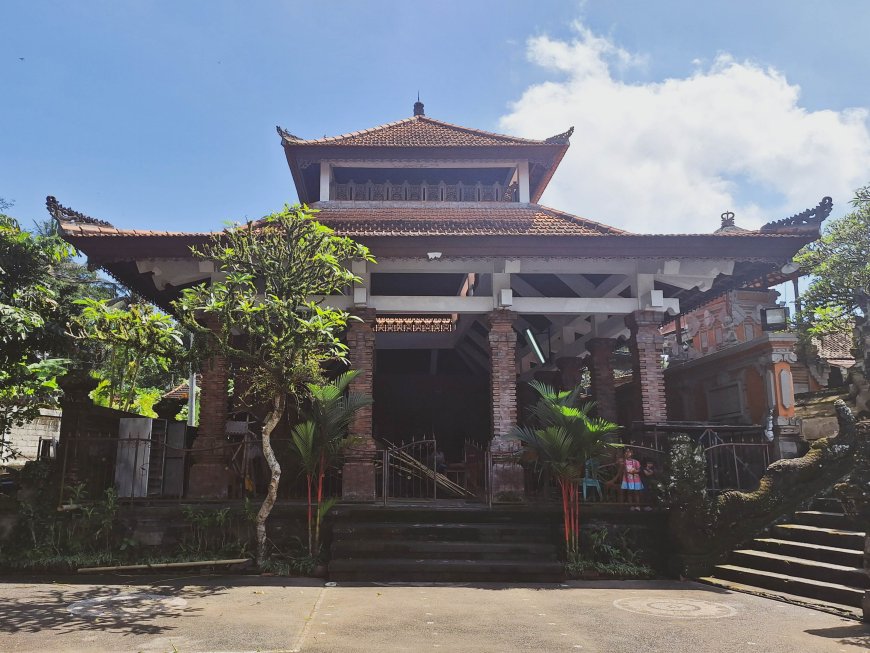 Wantilan of Pura Baturening (Photo Source: Personal Collection)
Wantilan of Pura Baturening (Photo Source: Personal Collection)
Upon entering the temple complex, visitors pass through the Jaba Sisi or outer courtyard. This area features the Candi Bentar (split gateway) as the main entrance, the Wantilan used for community gatherings and ceremonial preparations, and the Balai Kulkul, where a wooden drum is struck to signal ritual times. On the side stands the Pelinggih Balang Tama as the temple’s spiritual protector and the Perantenan, used for preparing offerings (banten).
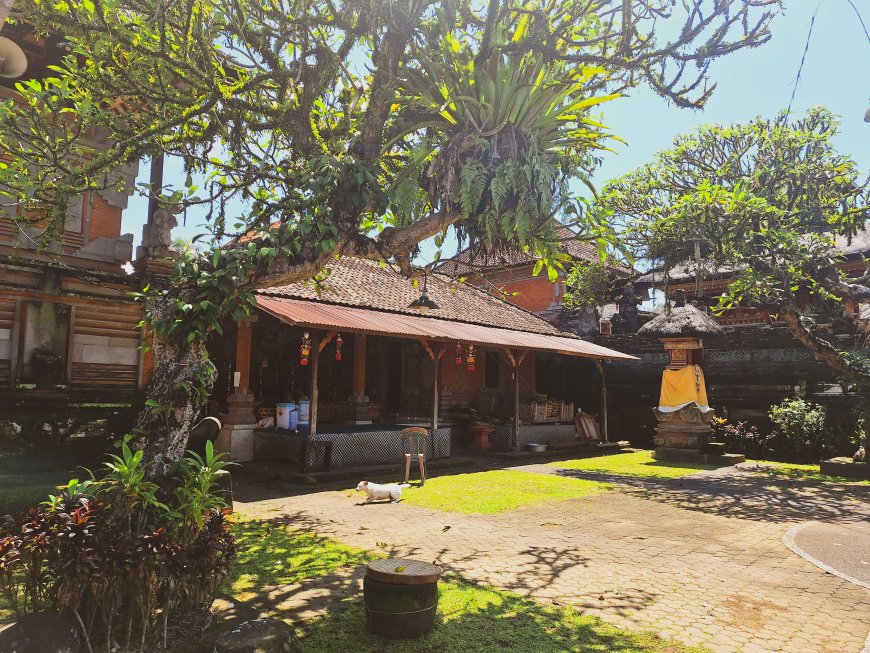 Madya Mandala Area (Photo Source: Personal Collection)
Madya Mandala Area (Photo Source: Personal Collection)
The next section is the Jaba Tengah or middle courtyard (Madya Mandala). This area contains the Balai Agung, the meeting hall for village discussions, the Piasan for ceremonial preparations, and the Panggung Melanting, dedicated to Dewi Melanting as the goddess of prosperity and trade. It also includes the Gedong Melanting for storing sacred objects (pratima), the Pengaruman for incense and fragrance offerings, and the Pelinggih Kawitan Bendesa Aban, the main shrine honoring the ancestors. There are also the Panggungan Kawitan, used during major ceremonies, and the Balai Pawedan, where the priest leads the prayers.
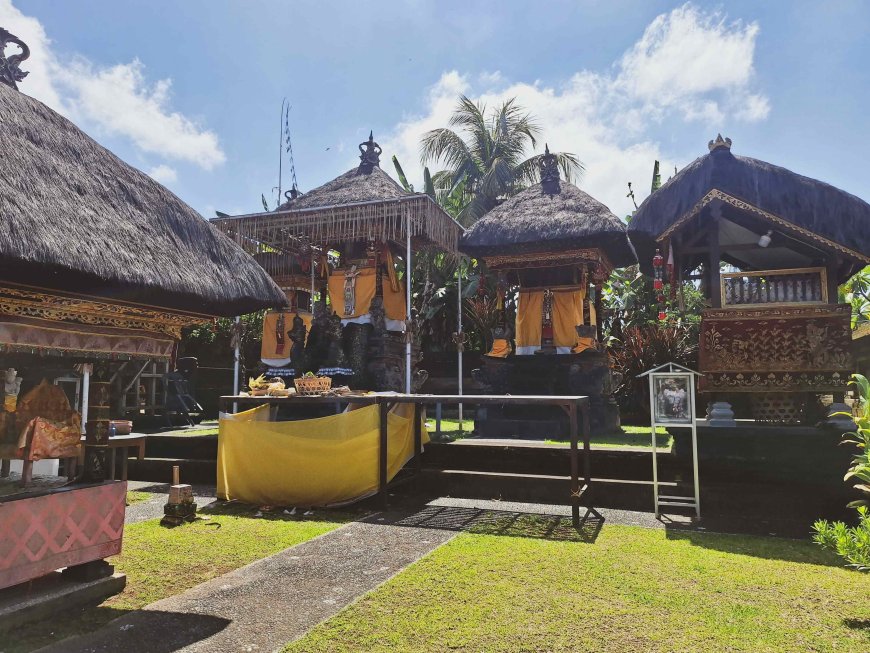 Shrine of Kawitan Bendesa Aban (Photo Source: Personal Collection)
Shrine of Kawitan Bendesa Aban (Photo Source: Personal Collection)
The most sacred area is the Utama Mandala or inner sanctum (jeroan), divided into two main sections. The first section features the Gedong Beraban for storing sacred objects, the Panggung Penataran for worshiping guardian deities, along with the Pengaruman, Balai Paselang, and Balai Pawedan that support ritual activities. The second section, known as the Pura Desa and Puseh area, includes the Gedong Pura Desa and Gedong Pura Puseh the central shrines for the protective and ancestral deities. It also includes the Pengaruman Desa Puseh, Panggungan Desa Puseh, and Piasan Desa Puseh for offerings, as well as the Balai Pesandekan Desa Puseh and Balai Pesandekan Penataran, which serve as resting areas for priests and worshippers. The Balai Pawedan Punia functions as a ritual pavilion, and the Balai Gong stores the gamelan instruments played during temple festivals.
The piodalan (temple anniversary) of Pura Baturening is celebrated during Purnama Kapat, a sacred time when the community gathers to offer devotion and gratitude to their ancestors. The ceremony represents both reverence for the past and the preservation of traditions inherited from ancient times. The temple is maintained through collective effort (gotong royong) by the local community, ensuring that it remains vibrant as a living center of worship and cultural heritage.
Through Pura Baturening, we learn that ancestral heritage is not only embodied in sacred structures but also in the values of unity, perseverance, and respect for the natural world. Today, Pura Baturening stands strong as the sacred legacy of Kawitan Bendesa Aban and a symbol of Bali’s enduring spiritual heritage across generations.
References
Babad Bendesa Aban. (Lontar Manuscript Collection of Desa Adat Baturening, Badung).
